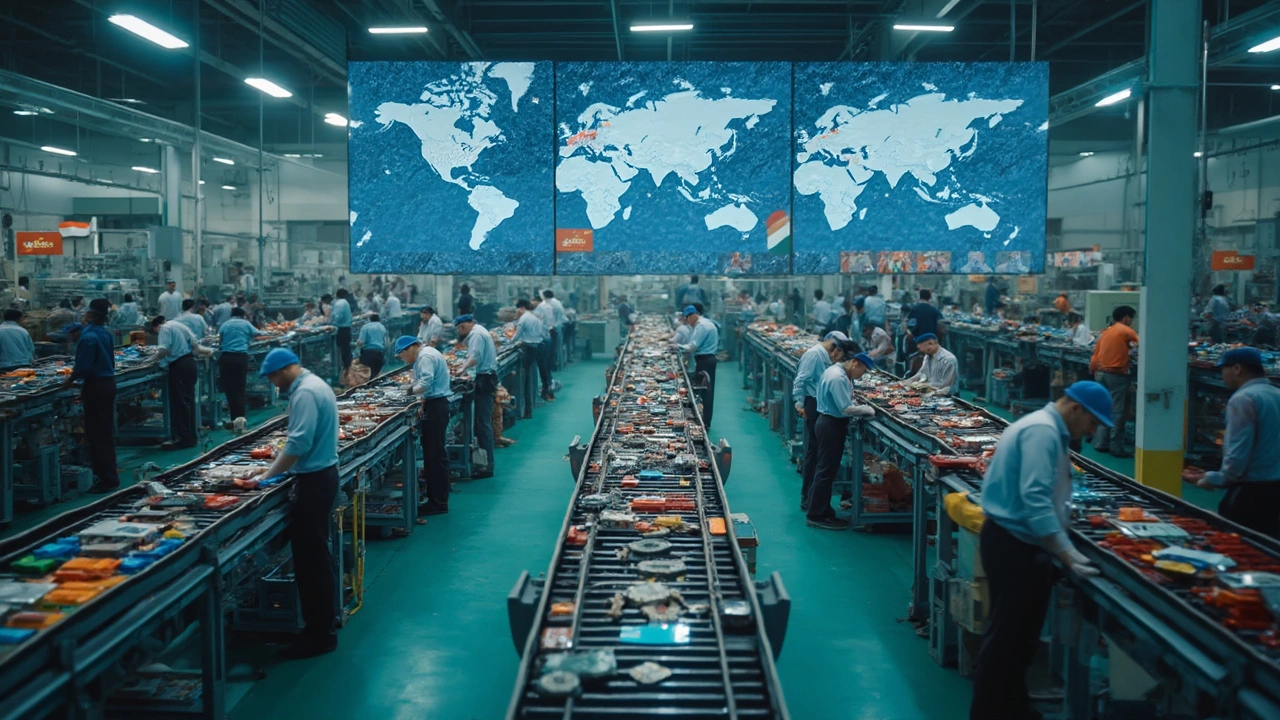Global Manufacturing Trends, Challenges & Opportunities
When you look at factories in Mumbai, steel plants in Pittsburgh, or chip fabs in Shenzhen, a pattern emerges: the world’s production is shifting fast. Companies that understand why these shifts happen can cut costs, boost quality, and stay ahead of rivals.
What’s Driving Production Around the World
Cost is still the biggest lever. India’s pharma sector, for example, churns out cheap generics because labor is affordable and the regulatory framework supports large‑scale output. That same cost advantage is helping IKEA set up local furniture lines, tapping into a growing middle class that wants stylish but inexpensive pieces.
Scale matters too. China remains the top electronics manufacturer because it can produce millions of smartphones in one go, keeping unit prices low. The US, meanwhile, relies on a handful of countries for heavy machinery imports – the data shows a clear concentration in a few export powerhouses.
Skill levels and technology adoption are another win‑win. Lean manufacturing principles, like the famous “7 wastes” framework, help factories in Germany and the U.K. trim excess steps and improve profitability. In India, the “mom method” is gaining traction as a simple way for small workshops to adopt lean ideas without massive investment.
Regulations also steer where things are made. India’s shift from BS4 to BS6 fuel standards forced many auto parts makers to upgrade or relocate. Similar moves happen in Europe, where stricter emissions rules push companies toward greener production processes.
How Companies Can Stay Competitive
First, map your supply chain. Knowing which countries supply the raw materials you need – like textiles from Bangladesh or steel from the U.S. – lets you spot bottlenecks before they hit your line. Real‑time data helps you shift orders when a port closes or a tariff changes.
Second, invest in technology that matches your scale. Small factories don’t need a fully automated robot line; a modest CNC machine can double output for a textile unit in Gujarat. Larger plants might look at AI‑driven quality checks, especially in high‑value sectors like aerospace or medical devices.
Third, adopt lean habits. Start by identifying the classic eight wastes – over‑production, waiting, transport, extra processing, inventory, motion, defects, and under‑utilized talent. Simple fixes, like reorganizing a workbench or scheduling preventive maintenance, often deliver the biggest profit bumps.
Finally, keep an eye on emerging markets. Countries such as Vietnam and Bangladesh are moving up the value chain, offering competitive labor and growing expertise in electronics assembly and garment production. Partnering with local firms there can give you a foothold without the expense of building a brand‑new plant.
Global manufacturing isn’t a single story; it’s a mosaic of cost dynamics, talent pools, regulations, and technology. By staying curious, watching data, and applying practical improvements, you can turn those moving pieces into steady growth.

Manufacturing Capital of the World: Who Holds the Crown in 2025?
Ever wondered which country actually leads the world in manufacturing? This article unpacks where the world's goods come from, why certain countries dominate, and what government schemes drive the industry. You'll see how policies shape manufacturing powerhouses and what other contenders are doing to catch up. With practical insights and real-world examples, it gives a fresh look at the global manufacturing race.
